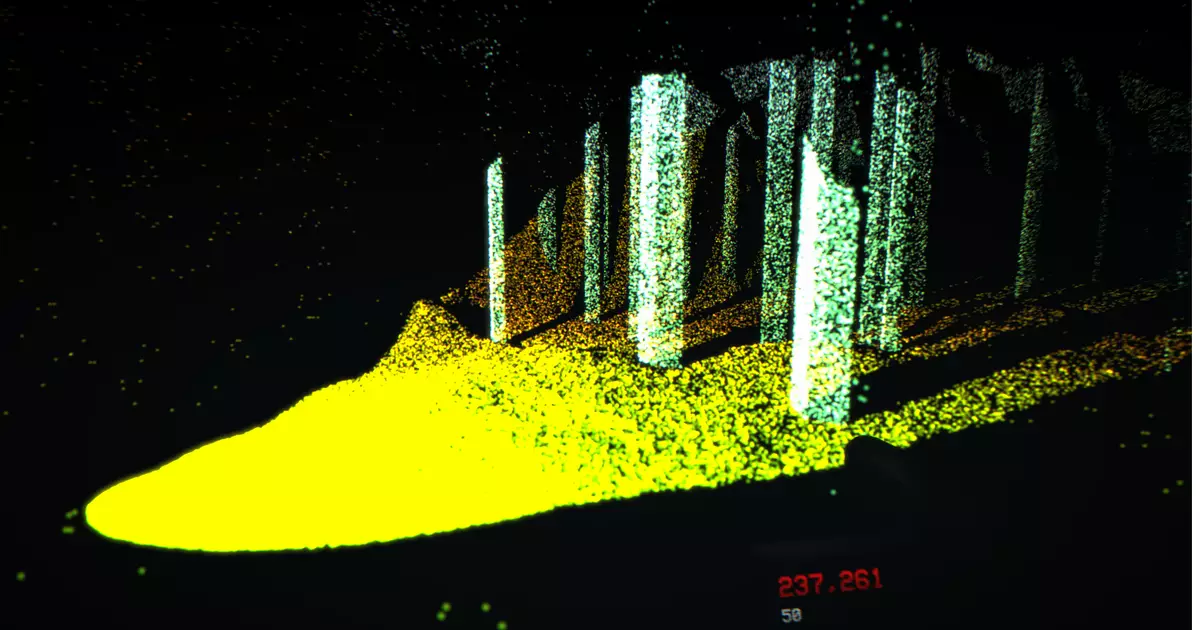In an era where video games stretch the boundaries of creativity and technology, KenForest’s “LiDAR Exploration Program” stands out as a compelling intersection of art and gaming. Utilizing LiDAR—an acronym for Light Detection and Ranging—the game invites players into a mesmerizing and eerie world where laser beams illuminate the landscape, enabling players to scan and reveal features of the environment. This innovative approach not only reflects advancements in tech but also resonates deeply with a generation increasingly captivated by both nature and digital individualism. By leveraging LiDAR’s capabilities, the game embodies not just a visual aesthetic but a narrative driven by the exploration of the unseen.
What sets this game apart from traditional horror narratives is its uniquely serene yet unsettling atmosphere. Rather than relying on jump scares or aggressive encounters, LiDAR Exploration Program fosters an ambient tension that grows from the player’s awareness of what lies hidden just beyond the illuminated surface. Players wield a LiDAR gun, transforming the unfamiliar terrain into something tangible while simultaneously grappling with the unsettling realization that beauty often harbors darkness. This interplay between light and shadow encapsulates a poignant theme: the more we unveil, the more we realize how much remains concealed.
The Art of Scanning and Revelation
Upon entering the game, players are greeted with a familiar yet enchanting rhythm seldom found in video games. The act of scanning with the handheld device becomes a meditative practice, akin to art-making in the realm of the digital. Each player-driven beam reveals a structured chaos: trees emerge with palpable density, riverbanks crystallize, and the beauty of a forest finds its voice through careful observation. Unlike more conventional horror games that often thrive on fast-paced action, this title encourages players to slow down and appreciate the artistic journey.
The design offers an analogous experience to that of “PowerWash Simulator,” transforming a laborious task into an artistic endeavor. Instead of washing dirt away, players sweep back the veil of illusion, coaxing forth the geometry of existence. Surprisingly, the absence of complex physics calculation allows the game to run effortlessly on various systems, positioning it as an accessible option for those who may not own high-end hardware. This democratization of art and exploration makes the LiDAR Exploration Program a precious tool not just for horror enthusiasts but for those fascinated by the visual spectacle and tactile nature of light.
Navigating the Subtle Horrors of the Unknown
However, lurking beneath the surface of this serene experience lies a powerful contradiction emblematic of modern life: a yearning for clarity amidst profound uncertainty. The game’s unsettling moments are birthed from this duality; the conceit of the LiDAR gun means players are continually reminded that scanned objects are sheer facades—hollow representations that appear tangible from one angle yet elusive from another. As players meander through detailed environments, it evokes a sense of malevolence as they unearth objects that suggest something strangely intimate but ultimately are devoid of substance.
By integrating a top-down rotatable level map view, the game encourages players to reflect on their explorations, reinforcing the notion that looking at something from a distance can drastically alter one’s perception. This mechanical choice cleverly echoes the line from cinematic horror where a protagonist follows eerie signs only to confront unspeakable truths. The mindfulness of detail in both the art and design refers back to the game’s core—what we perceive is often shaped by the tools at our disposal.
Emerging Perspectives on Light and Nature
Ultimately, KenForest has crafted an experience that transcends the boundaries of horror and engages with a broader commentary on the relationship between light and perception. Players who delve deeper into the landscapes are rewarded not just with unnerving revelations but with a newfound appreciation for the properties of light itself. There is an artfulness in how light dances through leaves, how shadows mingle with luminous visions—a delicate balance that resonates with those who recognize the power of observation.
The LiDAR Exploration Program isn’t merely an atmospheric horror game; it is a canvas for existential reflection, a prompt to question the layers of reality and perception that veils our understanding of the world. This unique experience serves not only as a means to entertain but to enlighten, echoing the need for introspection in an increasingly complex digital landscape. As players turn their devices toward the mysteries that lay before them, they engage in an exploration that is as much about the external world as it is about their internal self-awareness.


Leave a Reply